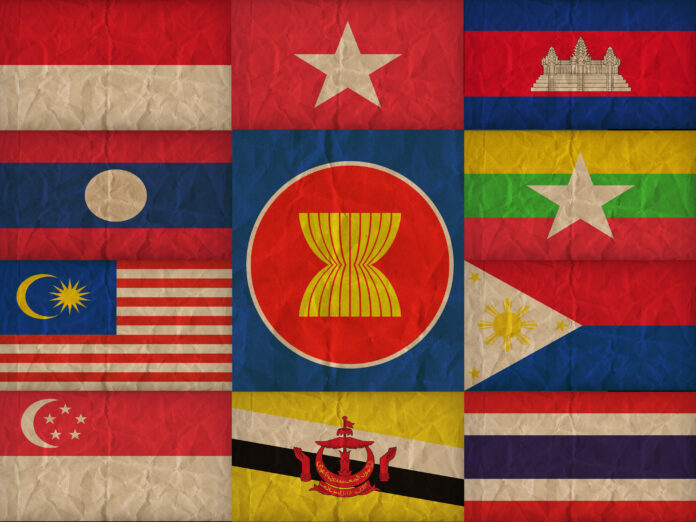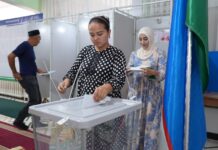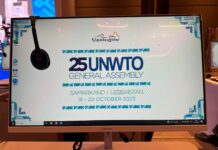The Association of Southeast Asian Nations (ASEAN) was founded on Aug 8 1967 in a bid to prevent the spread of communism, accelerate economic growth, social progress, cultural development and promote peace and security in Southeast Asia. Initiated by Thailand, the countries part of ASEAN include Malaysia, the Philippines, Indonesia and Singapore. Later joined by Brunei in 1984, Vietnam in 1995, Laos and Myanmar in 1997, Cambodia in 1999.
Original text by Asian Geographic Editoral Team (AG No. 147 02/2021)
Adapted for online publication by Tricia Ong

Strength in Unity
If ASEAN were a single country, it would have been the seventh-largest economy in the world. According to the latest International Monetary Fund World Economic Outlook figures, ASEAN countries have a combined GDP of USD3.08 trillion. It is predicted that by 2050, they will rank as the fourth- largest economy in the world.
Fifty years ago, many failed to see the enormous potential of the Southeast Asian region. With almost every country in the region having its own story of conflicts with its neighbours, and as a region of tremendous diversity, with differences in economic progress, political systems, ideology, culture, geographical size, and beliefs, outsiders saw ASEAN as an idea that would never materialise. In fact, many predicted that because of its diversity, Southeast Asia would become the “Balkans of Asia”. Yet many years on, ASEAN has become an engine of peace and stability in the region.
#DidYouKnow: Singapore ASKED to be part of ASEAN?
Thanat Khoman of Thailand brought forth the idea of forming another organisation of regional cooperation with Adam Malik. He invited 2 former Association for Southeast Asia members, Malaysia and the Philippines, as well as Indonesia. Singapore sent S. Rajaratnam, then Foreign Minister, to meet Thanat Khoman about joining the new set-up. Singapore’s request was favourably considered!

What has ASEAN achieved since?
Since its formation, ASEAN has weathered notable storms together. One of the more notable incidents that rallied ASEAN together was the 1997 Asian financial crisis. The Thailand baht, the Philippines peso and Indonesia rupiah were the most affected as the impact rippled throughout the region. In the wake of the crisis, the foreign ministers of the ASEAN countries believed that the well-coordinated manipulation of their currencies was a deliberate attempt to destabilise the ASEAN economies.
ASEAN also foresaw several achievements as well. This includes the ASEAN Free Trade Area created in 1992, where trade grew from 19 percent in 1993 to 23 percent in 2017.
Fundamental Principles
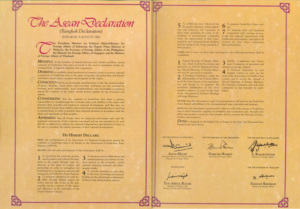
In order to maintain a common understanding between the different countries and governments, ASEAN adheres to these 6 fundamental principles.
- Mutual respect for the independence, sovereignty equality, territorial integrity and national identity of all nations
- The right of every State to lead its national existence free from external interference, subversion or coercion
- Non-interference in the internal affairs of one another
- Settlement of differences of disputes in a peaceful manner
- Renunciation of the threat of use of force
- Effective cooperation among members
In recent times
ASEAN has frequently been criticised for not acting more harshly against Myanmar’s treatment of Rohingya Muslims, for not being more assertive in the South China Sea disputes involving China and Taiwan, and most recently, for not taking punitive steps towards Myanmar for the military coup of 2021.
Following the military coup in February, the ASEAN has been trying to open a dialogue between the military rulers and their opponents to end the violence which claimed over 700 lives and more than 3,300 people detained. In line with ASEAN’s traditional non-interference focus, ASEAN has been largely divided – with Thailand, Vietnam, Cambodia and Laos opting to accept the coup and Indonesia, Malaysia and Singapore condemning the use of military force on unarmed civilians.
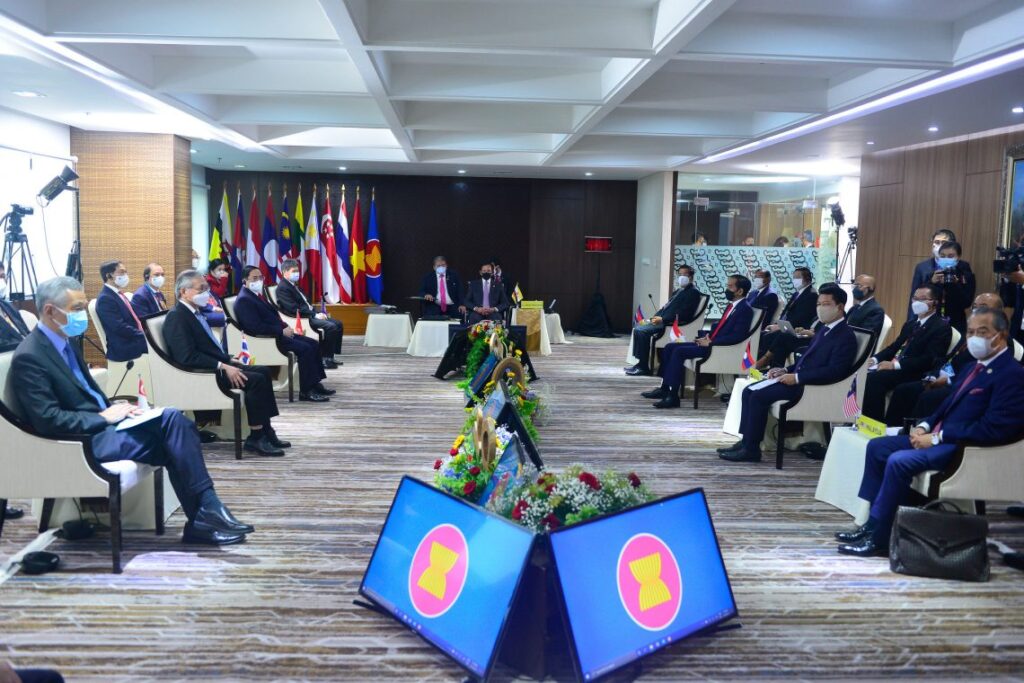
On 24 April, ASEAN held a summit to discuss the crisis in Myanmar. During which, a 5 point consensus was agreed upon. These are: an immediate cessation of violence in Myanmar, constructive dialogue among all parties, the appointment of a special ASEAN envoy to facilitate dialogue, the provision of humanitarian assistance, and a visit by the envoy to Myanmar. However, just 2 days later, Myanmar’s coup leader, Min Aung Hlaing, denied accepting the consensus.
After mulling over the appointment of a special envoy to Myanmar, ASEAN agreed upon Erywan Yusof, Brunei’s Second Minister for Foreign Affairs, on 4 August 2021.
Who is Eryan Yusof?

Myanmar’s Second Ministers to Foreign Affairs, Eryan Pehin Yusof was first involved with ASEAN’s in 1994, responsible for agricultural matters. He served as the focal point for the ASEAN Ministers Agriculture and Forestry meetings.
He later moved to the Department of International Trade at the Ministry of Foreign Affairs and Trade, becoming the Permanent Secretary at the Ministry of Foreign Affairs and Trade of Brunei Darussalam and later, Deputy Minister at the Ministry of Foreign Affairs and Trade of Brunei Darussalam.
There are mixed sentiments. For some, this brings a new glimmer of hope on the horizon as Erywan takes active steps to gain inroads into Myanmar, for others – especially, the resistance in Myanmar, their apprehensive trust is yet to be acquired.
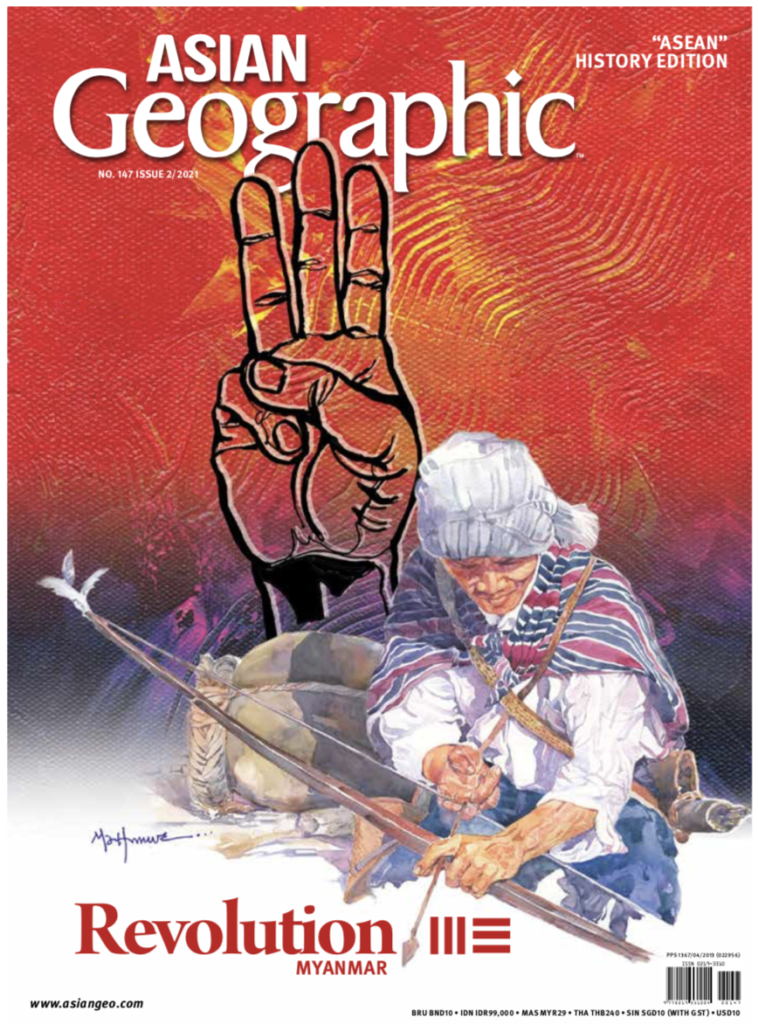
To read more about ASEAN and its developments, check out Asian Geographic Magazine Issue 2/2021 out in stores now or reserve your copy by emailing marketing@asiangeo.com.
Subscribe to Asian Geographic Magazine here or for more details, please visit https://www.shop.asiangeo.com/


